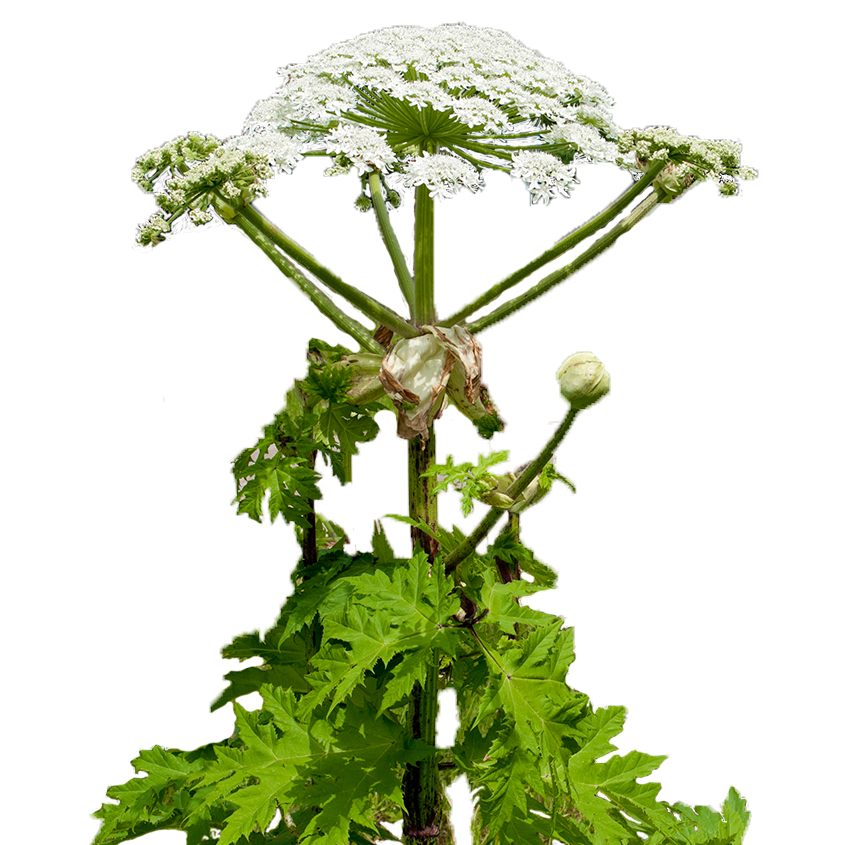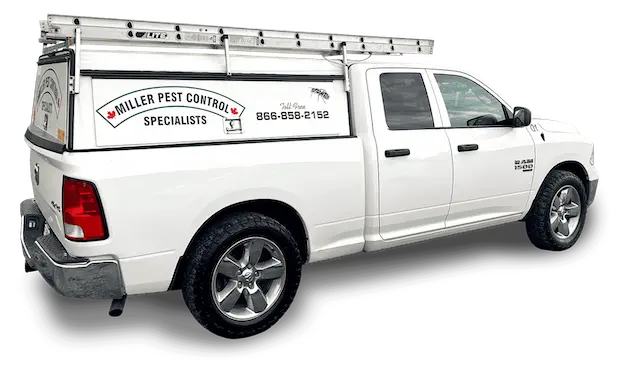Hogweed
Pest Control: How to Get Rid of Giant Hogweed
Control through Removal:
Giant Hogweed is an invasive and highly toxic weed. It is recommended you consult a professional pest control technician to handle the removal and disposal safely. Our Giant Hogweed control service starts at $250. Contact us to learn more.

In spring, you can remove as much of the root as possible. Digging up older plants can be difficult since roots can grow deeper than one metre. The plant might re-grow from the root and you may need to dig repeatedly to remove it completely.
If the plants have flowered, remove flower heads before they ripen (when they are white) to prevent seeds from growing and spreading. Note: If the flower heads have changed from white to green, seeds are being produced and it will be very hard to remove the seed heads and/or cut the plant without spreading the seeds. Return to the area regularly and remove any new growth.
Disposal:
Do Not Burn. Do Not Compost. Carefully remove flower heads from stems and place them in black plastic bags. Make sure not to drop any seeds while you are doing this. Seal the bags tightly and leave them in direct sunlight for about a week. Allow stems and roots to dry out thoroughly before disposing of them. Call your municipality to find out if bags containing Giant hogweed can be sent to your local municipal landfill site.
Control Using Herbicides:
Herbicides can be used to control plants (like giant hogweed) that are poisonous to the touch. Glyphosate is effective at controlling the top-growth of giant hogweed. If areas treated with glyphosate are covered in mulch 10 to 14 days after application, it will reduce seedling germination and growth. Herbicide treatments may need to be repeated in the following years. If a plant is flowering, herbicides are not effective and control methods should focus on carefully removing the plant.
About Hogweed
Giant Hogweed (Heracleum mantegazzianum) is a perennial plant that can grow several metres high if left unchecked. Hogweed has the potential to spread readily and grows along roadsides, ditches and streams. It invades old fields and native habitats such as open woodlands.
It can negatively impact the growth of other plants and its sap is toxic to human skin. Because of this hazard, it should be removed from your property immediately by a professional pest control technician.
Possible Health Concerns
Giant hogweed stems have a highly toxic sap, which is present on all parts of the plant. These toxins, called furanocoumarins, cause severe burns and blistering when exposed to UV light from the sun. Even when the painful blisters subside, permanent scarring can remain.
How to Identify a Hogweed
Giant Hogweed is a member of the carrot family. It’s resemblance to Queen Anne’s lace has caused it to become a garden ornamental. However, giant hogweed spreads easily and can establish along roadsides, ditches, and streams.
Giant Hogweed has a thick (3-8 cm in diameter) bright green stem with dark reddish-purple spots and coarse white hairs at the base of the leaf stock. The plant can be 2-5.5 metres tall with broad leaves that are deeply lobed and serrated. It produces a large upside-down umbrella-shaped head up to 80 centimetres across with clusters of tiny white flowers from late spring to mid-summer.

